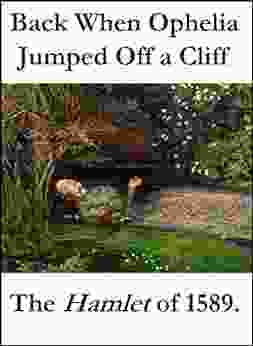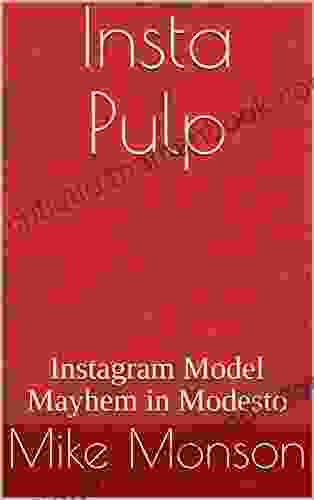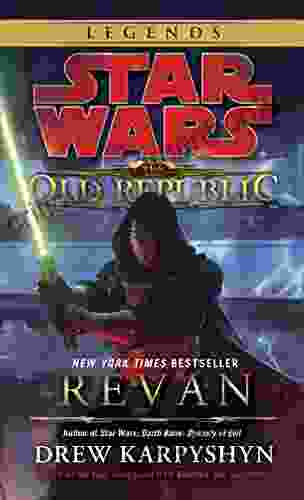The Hamlet of 1589: Shakespeare Authorship Without Ciphers or Conspiracies

The Hamlet of 1589, a lesser-known version of Shakespeare's iconic tragedy, is a captivating glimpse into the playwright's creative process and the evolution of his masterpiece. Unlike other theories about Shakespeare's authorship, this article delves into the historical and textual evidence surrounding the 1589 Hamlet, offering a compelling case for its authenticity without resorting to ciphers or conspiracies.
A Journey Through Time
The 1589 Hamlet emerged during a transformative period in English theater. The Elizabethan era witnessed an explosion of creativity, and Shakespeare was at the forefront of this literary renaissance. However, the early years of his career are shrouded in mystery. The first definitive record of his work is the publication of his poem "Venus and Adonis" in 1593, and the earliest known performance of Hamlet is recorded in 1603.
5 out of 5
| Language | : | English |
| File size | : | 971 KB |
| Text-to-Speech | : | Enabled |
| Screen Reader | : | Supported |
| Enhanced typesetting | : | Enabled |
| Print length | : | 112 pages |
| Lending | : | Enabled |
The discovery of the 1589 Hamlet in the late 19th century shed new light on this enigmatic period. The play was found in a manuscript known as the "Bad Quarto," a pirated and incomplete version of Shakespeare's text. Despite its flaws, the Bad Quarto contains tantalizing clues about the play's origins and authorship.
Authorship: The Weight of Evidence
The authorship of the 1589 Hamlet has been a subject of scholarly debate, with some questioning whether Shakespeare was solely responsible for its creation. However, a thorough examination of the play's language, style, and themes reveals compelling evidence supporting Shakespeare's authorship.
The play's distinctive use of language, with its rich imagery, intricate wordplay, and evocative metaphors, bears the hallmarks of Shakespeare's genius. The characterization of Hamlet, with his complex inner conflicts and philosophical musings, is consistent with Shakespeare's portrayal of other tragic heroes. Moreover, the play's exploration of themes such as mortality, revenge, and the nature of madness is central to Shakespeare's dramatic vision.
Stylistic analysis also supports Shakespeare's authorship. The 1589 Hamlet exhibits similar metrical patterns, rhetorical devices, and dramatic structures found in Shakespeare's other early works. The play's use of blank verse, with its flexible rhythms and evocative cadences, is a characteristic feature of Shakespeare's writing.
Significance: A Window into Shakespeare's Development
The 1589 Hamlet is not merely a historical curiosity but a significant work in its own right. It provides valuable insights into Shakespeare's development as a playwright and the evolution of his masterpiece. The play's shorter length, simpler plot, and more straightforward language suggest that it represents an earlier stage in Hamlet's development. By comparing the 1589 Hamlet with the later versions, scholars can trace the playwright's artistic growth and refinement.
The 1589 Hamlet also offers a glimpse into the collaborative nature of Elizabethan theater. It is likely that Shakespeare worked with other playwrights, actors, and theater companies in the creation of the play. The Bad Quarto may have been a pirated version of an early draft or a reconstruction based on memory, reflecting the fluidity of theatrical productions in that era.
: Embracing Complexity
The Hamlet of 1589 is a fascinating and important work that contributes to our understanding of Shakespeare's authorship and the evolution of his masterpiece. It stands as a testament to the playwright's genius and the dynamic nature of literary history. Embracing the complexity of the play's authorship and significance allows us to appreciate the richness and depth of Shakespeare's creative legacy.
While ciphers and conspiracies can add intrigue to the study of Shakespeare, it is the careful examination of historical and textual evidence that ultimately provides the most compelling insights into his work. The Hamlet of 1589, with its undeniable Shakespearean qualities and its role in the development of one of literature's greatest tragedies, stands as a powerful reminder of the enduring power of authorship without the need for sensationalist theories.
5 out of 5
| Language | : | English |
| File size | : | 971 KB |
| Text-to-Speech | : | Enabled |
| Screen Reader | : | Supported |
| Enhanced typesetting | : | Enabled |
| Print length | : | 112 pages |
| Lending | : | Enabled |
Do you want to contribute by writing guest posts on this blog?
Please contact us and send us a resume of previous articles that you have written.
 Top Book
Top Book Novel
Novel Fiction
Fiction Nonfiction
Nonfiction Literature
Literature Paperback
Paperback Hardcover
Hardcover E-book
E-book Audiobook
Audiobook Bestseller
Bestseller Classic
Classic Mystery
Mystery Thriller
Thriller Romance
Romance Fantasy
Fantasy Science Fiction
Science Fiction Biography
Biography Memoir
Memoir Autobiography
Autobiography Poetry
Poetry Drama
Drama Historical Fiction
Historical Fiction Self-help
Self-help Young Adult
Young Adult Childrens Books
Childrens Books Graphic Novel
Graphic Novel Anthology
Anthology Series
Series Encyclopedia
Encyclopedia Reference
Reference Guidebook
Guidebook Textbook
Textbook Workbook
Workbook Journal
Journal Diary
Diary Manuscript
Manuscript Folio
Folio Pulp Fiction
Pulp Fiction Short Stories
Short Stories Fairy Tales
Fairy Tales Fables
Fables Mythology
Mythology Philosophy
Philosophy Religion
Religion Spirituality
Spirituality Essays
Essays Critique
Critique Commentary
Commentary Glossary
Glossary Bibliography
Bibliography Index
Index Table of Contents
Table of Contents Preface
Preface Introduction
Introduction Foreword
Foreword Afterword
Afterword Appendices
Appendices Annotations
Annotations Footnotes
Footnotes Epilogue
Epilogue Prologue
Prologue Agatha Christie
Agatha Christie Tom Alesia
Tom Alesia Layla Hagen
Layla Hagen Paula Greathouse
Paula Greathouse Kay Burke
Kay Burke Sienna Mynx
Sienna Mynx Pearl S Buck
Pearl S Buck Boo Heisey
Boo Heisey Robert J Shiller
Robert J Shiller Naomi Lucas
Naomi Lucas Gus Velamier
Gus Velamier Mary Kubica
Mary Kubica Nacole Shaw
Nacole Shaw Michael Law
Michael Law David Hosford
David Hosford George Carlin
George Carlin Becky Rapinchuk
Becky Rapinchuk Alison Taylor Brown
Alison Taylor Brown Harry S Dent
Harry S Dent Ezra Pound
Ezra Pound
Light bulbAdvertise smarter! Our strategic ad space ensures maximum exposure. Reserve your spot today!

 William PowellThe Peculiar World of Funny Science Fiction Comedy: Where Laughter and the...
William PowellThe Peculiar World of Funny Science Fiction Comedy: Where Laughter and the...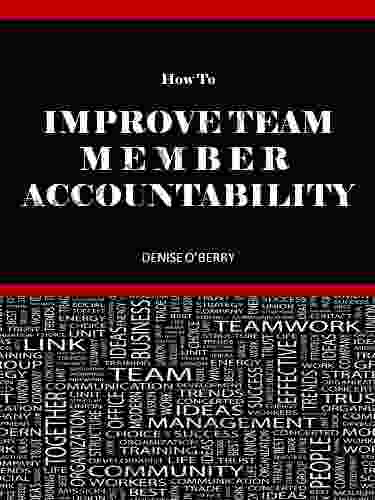
 Kendall WardHow To Improve Team Member Accountability: Team Building Tool Box For Busy...
Kendall WardHow To Improve Team Member Accountability: Team Building Tool Box For Busy...
 Thomas PowellThe Ultimate Ninja Foodi XL Pro Grill Griddle Cookbook for Beginners: Master...
Thomas PowellThe Ultimate Ninja Foodi XL Pro Grill Griddle Cookbook for Beginners: Master... Donovan CarterFollow ·12.5k
Donovan CarterFollow ·12.5k Cormac McCarthyFollow ·19.9k
Cormac McCarthyFollow ·19.9k Ian PowellFollow ·4.4k
Ian PowellFollow ·4.4k Joseph ConradFollow ·4.9k
Joseph ConradFollow ·4.9k John KeatsFollow ·8.7k
John KeatsFollow ·8.7k D'Angelo CarterFollow ·9.3k
D'Angelo CarterFollow ·9.3k David PetersonFollow ·13.9k
David PetersonFollow ·13.9k W. Somerset MaughamFollow ·5.2k
W. Somerset MaughamFollow ·5.2k
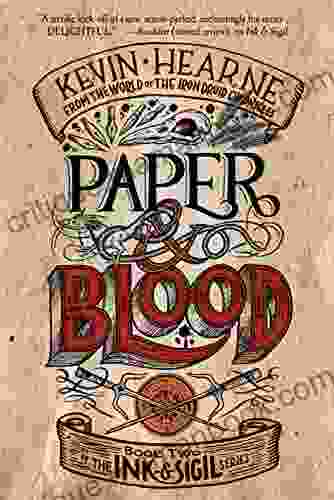
 Dan Henderson
Dan HendersonPaper Blood: Two of the Ink Sigil
By D.S. Otis In...

 Joseph Conrad
Joseph ConradStarting Up: Critical Lessons from 10 New Schools
Starting a new school...

 William Powell
William PowellThe Peculiar World of Funny Science Fiction Comedy: Where...
Prepare yourself for an...

 Edgar Hayes
Edgar HayesUkulele Songs for Beginners: A Comprehensive Guide to...
Embark on a musical journey with the...

 Ralph Turner
Ralph TurnerDogs vs. Chickens: A Comprehensive Guide to Choosing the...
Dogs and chickens are both popular...
5 out of 5
| Language | : | English |
| File size | : | 971 KB |
| Text-to-Speech | : | Enabled |
| Screen Reader | : | Supported |
| Enhanced typesetting | : | Enabled |
| Print length | : | 112 pages |
| Lending | : | Enabled |


